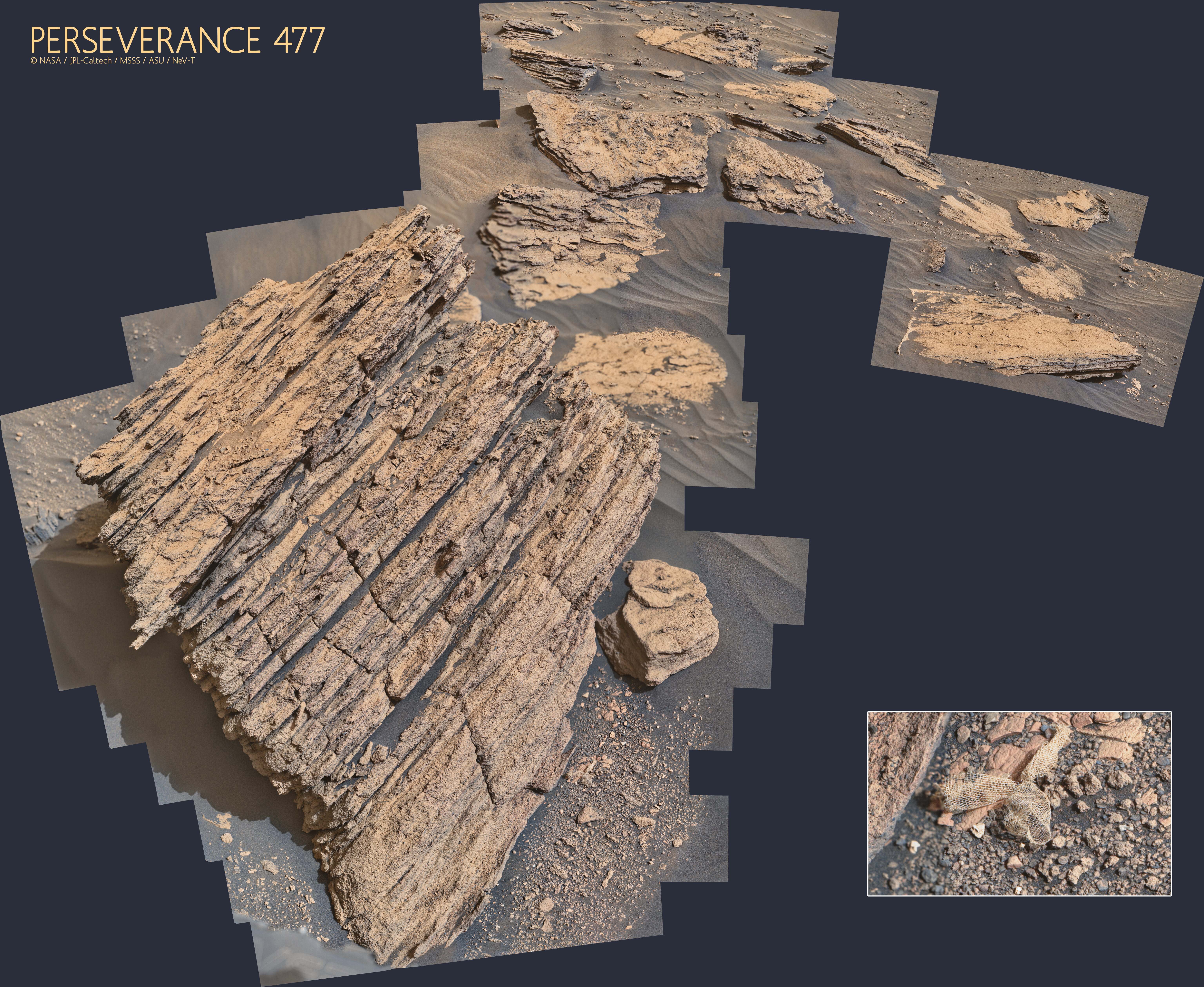But much more interesting than the lost EDL hardware parts are the Martian rocks in a sol 467 Mastcam-Z image,
especially the one with the textured surface in the upper right part of the image.
especially the one with the textured surface in the upper right part of the image.
Martian beasties must have had three sets of chompers!
It looks like wind-enhanced differential weathering of cementation. Some minerals, especially carbonates, exhibit a cone-shaped pattern as the cement precipitates in the pore spaces of the rock or sediment. A least in this piece of float, it looks like there were at least three times in which the precipitation stopped and started, nucleating on the previous episode.
Check out these terrestrial examples:
Cone-in-cone
Multiple cone-in-cone layers at Lyme Regis
from this paper:
Beef and cone-in-cone calcite fibrous cements associated with the end-Permian and end-Triassic mass extinctions: Reassessment of processes of formation













